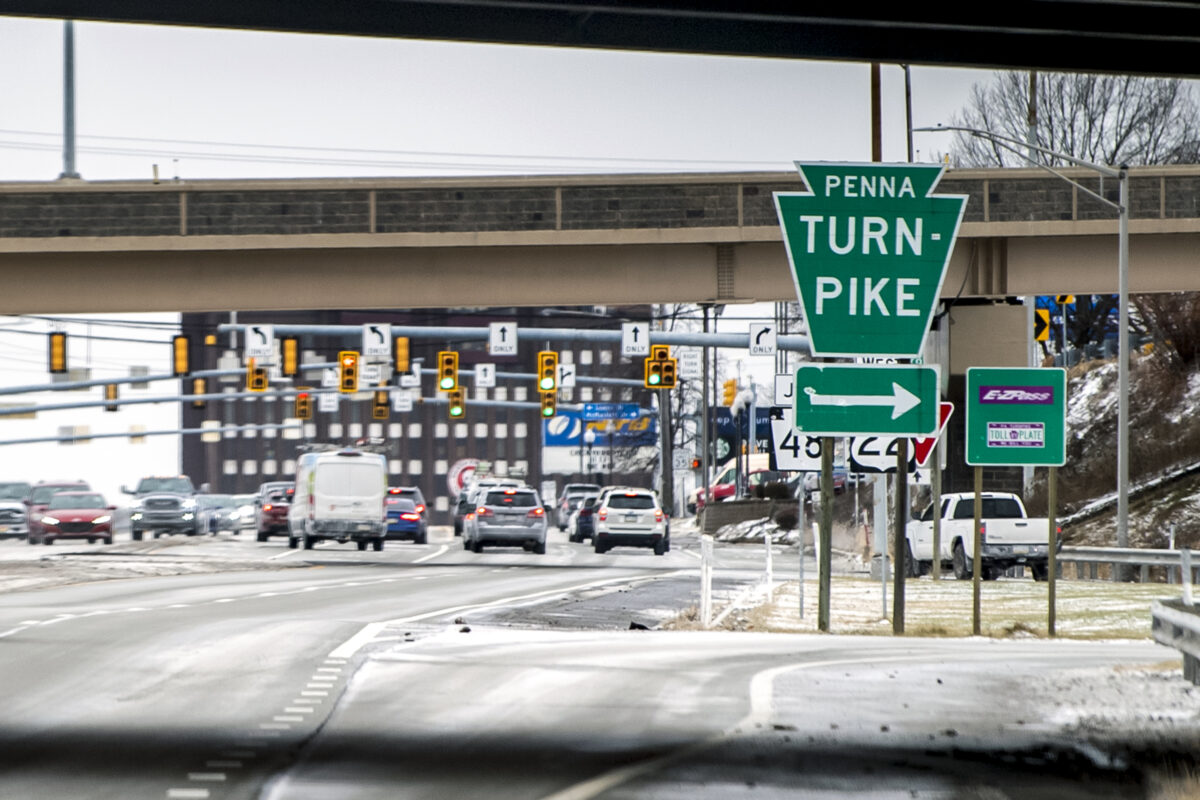The financial difficulties caused by the COVID-19 pandemic for the Pennsylvania Turnpike — and many other agencies that rely on traffic volume — are mostly in the rearview mirror.
But inflation related to the country’s economic recovery from the pandemic is limiting the agency’s ability to expand capital projects, such as its continuing effort to expand the toll road to three lanes in each direction across the state. Much of the additional $243.3 million the agency expects for capital projects in the new year will be eaten up by higher costs for items such as steel, asphalt and diesel fuel.
The turnpike commission approved a $437.7 million operating budget Tuesday for the new fiscal year that begins June 1. That’s up about $12.5 million from the current budget.
Rick Dreher, the turnpike’s chief financial officer, said continuing increases in turnpike traffic has resulted in more revenue for the agency. Although passenger traffic remains about 5% below the 2019 level seen before the pandemic, more lucrative commercial traffic is well above pre-pandemic levels.
Overall, traffic volume increased by 3% in March this year compared to the previous year, and revenue increased by 5.7%, which Dreher attributed partially to the 5% toll increase in January. The agency expects revenue to increase about 6.9% in the new fiscal year to $1.66 billion, not including additional revenue from the expected 5% toll increase next January.
Before the pandemic, the agency had a goal of keeping spending increases to 4% or less. It cut that goal to 2% during the pandemic, when it lost about $250 million as motorists were ordered to stay home, and increased the goal to 3% this year as the pandemic eased.
The approved spending plan came in 2.9% higher than the current year.
“In an era of high inflation, that’s certainly a positive for our financial picture to keep the increase to 2.9%” Dreher said in an interview Tuesday.
Besides operating expenses, the turnpike will pay an additional $836 million in debt service. It has long-term debt of more than $14 billion, much of it accumulated during more than 12 years of borrowing to make an annual payment of $400 million to the Pennsylvania Department of Transportation to support public transit.
Those payments ended last year, but the debt service on the billions the agency borrowed to make them extends beyond 2050.
On the capital side, the commission approved a 10-year program that calls for spending $7.7 billion on road and bridge projects. For next year, capital spending is expected to be $895 million, up from $651.7 million this year.
“This does not reflect any additional projects,” Dreher said. “That was the cost to maintain the existing projects and keep them on schedule.”
A good deal of that extra money will cover double-digit price increases on some materials, he said, and some of it is related to projects moving into more expensive phases. Additionally, crews were able to do additional work through the mild winter, which moved up payments to contractors.
One benefit from the elimination of the payment to PennDOT, Dreher said, is that the turnpike can use about $400 million in cash toward capital projects, up from $250 million the previous year. That reduces the agency’s borrowing for road and bridge work.
A major part of the agency’s capital budget over the next four to six years will be the installation of overhead gantries across the state to replace toll booths, which have been taking tolls electronically using E-ZPass or taking photos of license plates since mid-2020. The gantries will accomplish the same tasks on the open highway without requiring vehicles to slow down on exit ramps.
The program’s first phase will begin with 19 gantries between exits on the turnpike east of Reading and along the Northeast Extension. That work should be completed in 2025.
The second phase will involve installing similar gantries in central and western Pennsylvania.
After the gantries are installed, the turnpike will remove exit and entry plazas and redesign them to provide free-flowing traffic. Those future entrances and exits also are expected to be far less expensive because they won’t use as much land as the stations that drivers previously used to obtain or pay toll tickets.
“Open Road Tolling is the culmination of the PA Turnpike’s decade-long journey to modernize operations and meet customer expectations for seamless, nonstop travel,” CEO Mark Compton said in a news release. “ORT is a safer, more convenient way for customers to travel and represents the future of toll collection worldwide.”
The agency said the gantries will save the agency about $75 million a year when they are fully implemented.
Ed covers transportation at the Pittsburgh Post-Gazette, but he's currently on strike. Email him at eblazina@unionprogress.com.



